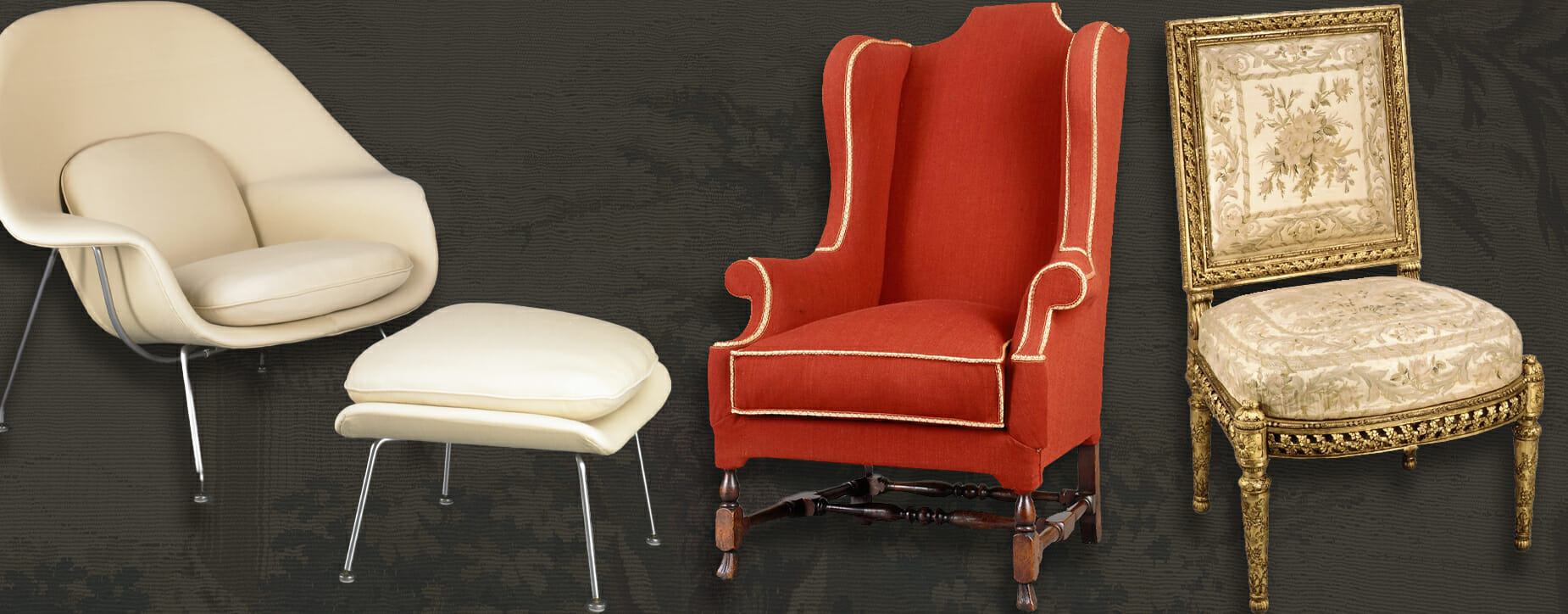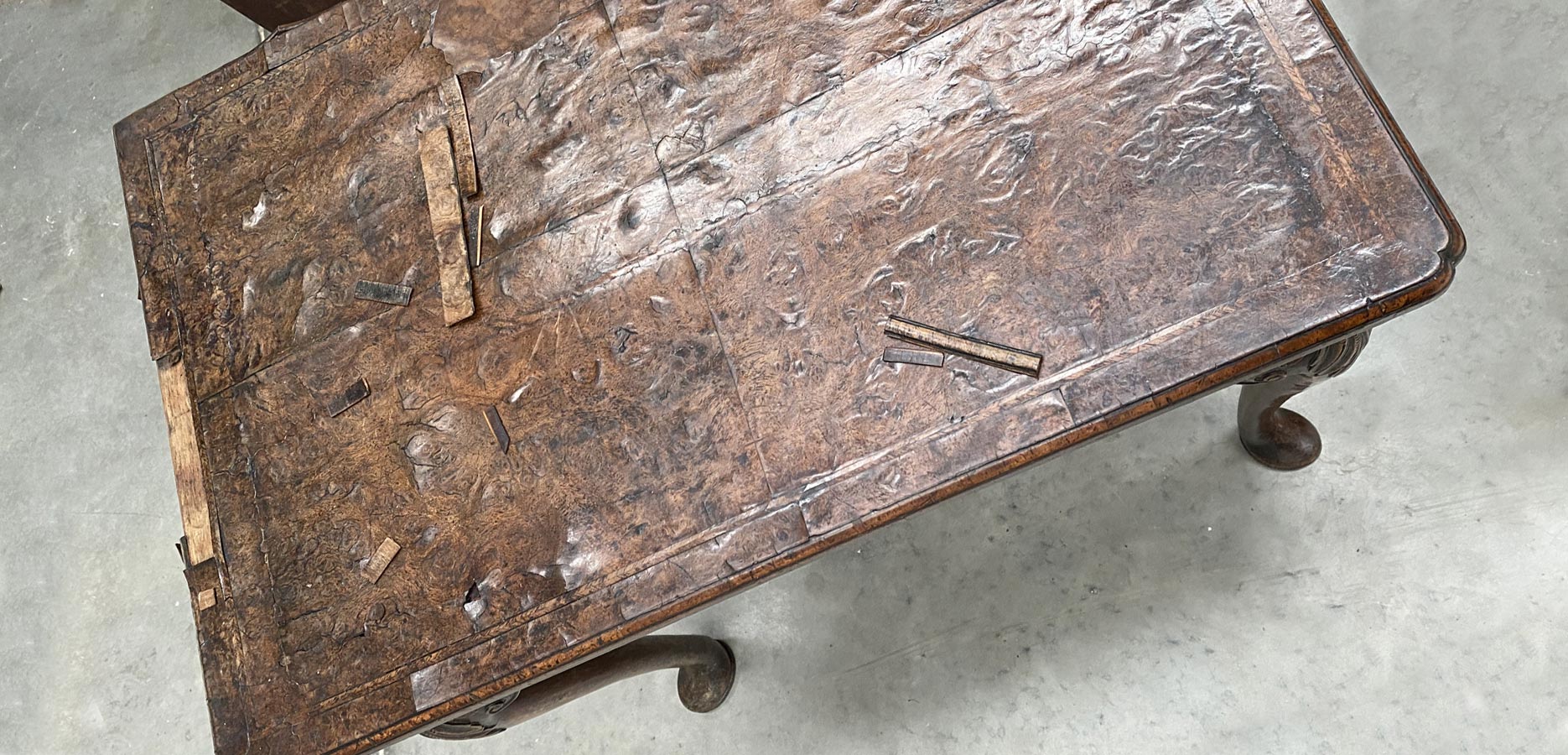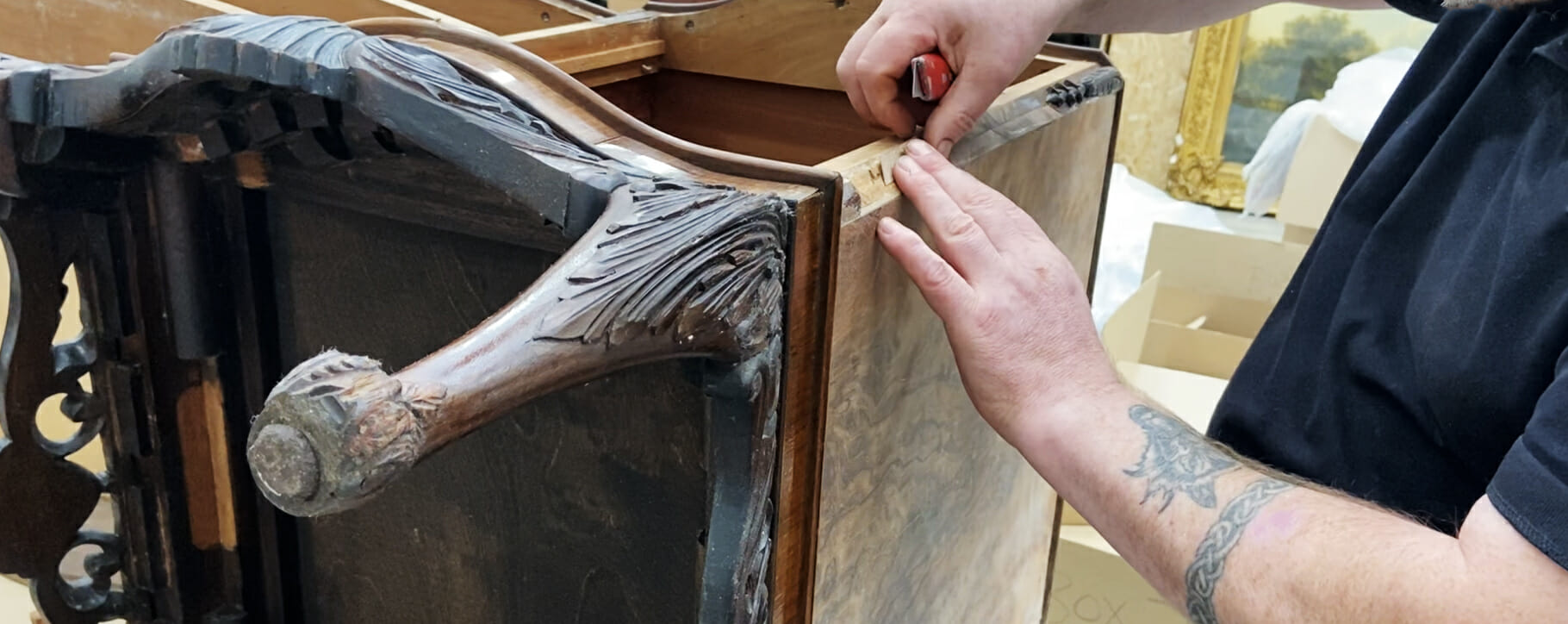To understand how to best look after your furniture, the key is to understand the materials from which it was made. Various types of wood have been used throughout the many design styles of antique furniture, all of which are susceptible to natural decay which can be accelerated by the environment in which they sit. As well as this, any historic metal or glue in the joints may deteriorate over time and cause their own damage if the signs are not caught quickly. There is a connection between the types of accidental damage faced by furniture and their current structural stability.
This article will give you an overview of what to look for and how to treat different types of damage faced by antique furniture.
Instability
The joints in furniture can become loose or unstable for different reasons. A slight wobble in the structure of a table or chair may seem manageable and no more than a nuisance, but over time this can damage the overall structure of the piece. If you notice any loose parts, look for the cause.
Common decay in joints can come from changes in temperature, infestations of woodworm and pests, strain from incorrect use, the disintegration of glue or metal, or faults in the original craftsmanship. Some of these causes may be more distressing than others, but overall the plan of action should be to stabilise any loose parts before they begin to warp, split or cause further damage.
The smaller the damage, the more seamless the repair can be, preserving both the historic integrity and the full value of the work. A specialist furniture conservator will also be able to assess the work for any hidden dangers, so it is worth bringing any unstable woodwork to them for both restoration and a health check.
Upholstery
Textiles are easily worn down, in antique works they are extremely fragile as their natural fibres are already prone to aging decay. Highly valuable or purely aesthetic furniture should never be used for their original function, instead they should be protected with thought given to the temperature (which should be kept around 19 degrees celsius), as well as the humidity in the room (no higher than 55%). Ensuring the avoidance of bright sunlight and artificial light will also slow any fading. Consider a form of UV protective covering, which will also stop any pests or dust from entering the fabric.

The same levels for temperature, humidity and lighting can also be considered with furniture which does not warrant a museum level of conservation, which you would like to use for its original function. Dining chairs, settees, and headboards may be used on a daily basis, but they should also be carefully vacuumed regularly to remove dust, light debris, and any small insects which may be hiding.
Shrinking
Wood shrinks easily due to a drop in humidity and moisture. Different furniture can shrink in different ways depending on which type of timber has been used in the original construction.

A straight piece of log cut vertically is more likely to cup when it is in a dry environment, whilst wood which has been cut as a quarter from the round of the log will remain flat and reduce width. This innate reaction to dry environments continues when the wood is shaped into a piece of furniture, often breaking or distorting its constraints by the natural force which urges it.
It is best practice to keep antique furniture around 2ft from any heat source, such as a fire or radiator, to stop the natural moisture in the wood from evaporating. To revive dried wood, a solution can be applied, this can be homemade from a 50/50 solution of boiled linseed oil and turpentine.

Shrinkage can leave furniture with a permanently warped structure. Constant changes in temperature and humidity, such as a position near an exterior door, can lead to large and obvious breakages in the wood. This can sometimes occur over a long period of time, with the wood contracting and expanding to the point it may begin to physically break some years later.
Ensuring your furniture is kept in a room with a steady environment will help to avoid these expensive distortions. If you’re worried about signs of shrinkage, contact a furniture conservator for advice, an assessment and preventative restoration if required.
Pests
Beetles which produce woodworm larvae much prefer to be outside, living in damp logs in woodland. Luckily, this means that inside they breed at a much slower rate, as these are dry conditions which are free of their favoured natural decay such as mould, rot and fungus. However, any acceleration in humidity or dampness will greatly accelerate the damage they are able to create.
Small holes of about 1-5mm diameter on the surface of the wood are a strong indicator of a current or past infestation. These holes are in fact ‘escape holes’ which have been created by larvae coming out of their burrow inside the wood, they are then used again by later generations of the beetle to lay eggs and thus encourage their life cycle.

Recent dust particles around these spaces is a sign of current infestation, though the entire piece should be checked over, including taking out drawers or interior pieces for a full inspection. Areas in which the wood has split or has thin crevices are also prime locations for insects to breed, these should be sealed by a specialist.
Walnut, lime and softwoods are at the highest risk of woodworm decay. Mahogany, cedar and teak are less likely, but still at risk.
A high-quality woodworm repellent can be applied by a furniture conservator if there is any sign of activity. However, if the piece contains areas of upholstery, fumigation is recommended.
Any wood which is kept in damp conditions or high humidity can encounter fungal infestation, mould and ultimately begin to rot. The most problematic areas of a house will be unventilated bathrooms, kitchens and any area with older forms of plumbing or past leaks. Keeping a balanced environment is important for the preservation of any kind of wooden antiques, to avoid catastrophic forms of decay or infestation.
If you have a wobble, woodworm or another issue with your furniture, please contact us for advice or a free no obligation quotation.






